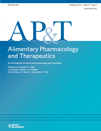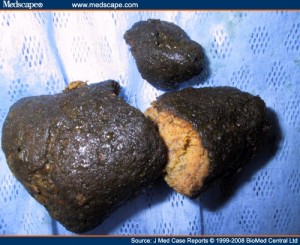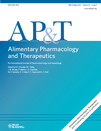 Now it is unlikely that when I mention the problem for which a recent publication in in the January 2013 issue of Alimentary Pharmacology and Therapeutics confirmed Coca Colas therapeutic use, that you have either heard of it, or will ever see it in clinic.[1]
Now it is unlikely that when I mention the problem for which a recent publication in in the January 2013 issue of Alimentary Pharmacology and Therapeutics confirmed Coca Colas therapeutic use, that you have either heard of it, or will ever see it in clinic.[1]
However, the spin on this use is the effect of coca cola and the implications for its continued ingestion, especially when eating.
Gastric bezoars (what are they!) is an indigestible object introduced intentionally into the digestive system and usually found in the stomach. Phytobezoars are composed of indigestible plant material (e.g., cellulose), and are frequently reported in patients with impaired digestion and decreased gastric motility.
Phytobezoars’ conservative management includes administration of proteolytic enzymes, cellulase, carbohydrate beverages, either orally or by gastric lavage, and endoscopic  fragmentation. The mechanism of bezoar dissolution by Coca-Cola has not been thoroughly explained, but having an acidity of pH 2.6, due to carbonic and phosphoric acid, it resembles gastric acid, which is thought to be important for fibre digestion. In addition, NaHCO3 mucolytic effect and CO2 bubbles enhance the dissolving mechanism. Availability, low cost, rapid way of action, simplicity in administration and safety renders Coca-Cola a cost-effective therapy for gastric phytobezoars.
fragmentation. The mechanism of bezoar dissolution by Coca-Cola has not been thoroughly explained, but having an acidity of pH 2.6, due to carbonic and phosphoric acid, it resembles gastric acid, which is thought to be important for fibre digestion. In addition, NaHCO3 mucolytic effect and CO2 bubbles enhance the dissolving mechanism. Availability, low cost, rapid way of action, simplicity in administration and safety renders Coca-Cola a cost-effective therapy for gastric phytobezoars.
Comment
So when trying to encourage the suppression of ingestion volumes of Coca Cola with patients and children it may be time to pull out the photo of a phytobezoar and explain that in 90% of cases simply drinking Coca Cola results in a dissolution – what are the implications for other fibrous foods?
Reference
[1] Ladas SD, Kamberoglou D, Karamanolis G, Vlachogiannakos J, Zouboulis-Vafiadis I. Systematic review: Coca-Cola can effectively dissolve gastric phytobezoars as a first-line treatment. Aliment Pharmacol Ther. 2013 Jan;37(2):169-73. View Full Paper





